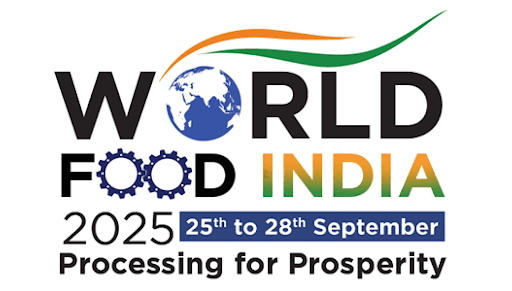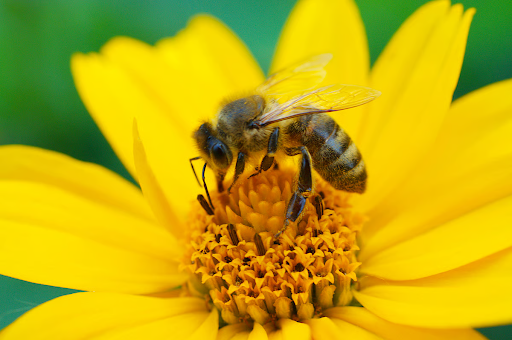Description

Disclaimer: Copyright infringement not intended.
READ ABOUT INDIA’S DAIRY SECTOR: https://www.iasgyan.in/daily-current-affairs/dairy-sector
Context
- With many states enacting stringent anti-slaughter laws, Indian dairy farmers have been facing challenges in disposing of unproductive cattle — the ones that do not give enough milk or happen to be male.
- Now, they have been hit by a new “surplus” problem — of skimmed milk powder (SMP).
- Cooperative and private dairies are holding an estimated 3-3.25 lakh tonnes (lt) of SMP stocks at the start of the production year that runs from July to June.
READ ABOUT INDIA’S DAIRY SECTOR: https://www.iasgyan.in/daily-current-affairs/dairy-sector
What is SMP (Skimmed Milk Powder)?
- SMP is a dairy product derived from milk after separating cream (fat) and drying the skimmed milk.
- Composition of Milk:
- Cow milk: Contains 3.5% fat and 8.5% solids-not-fat (SNF) on average.
- Buffalo milk: Contains 6.5% fat and 9% SNF.
- Perishability of Milk: Milk is highly perishable and cannot be stored for long periods.
Production Process of SMP and Other Dairy Products
- Seasonal Variation:
- Flush Season: Period when cattle and buffaloes produce surplus milk.
- South and Maharashtra: July to December (post southwest monsoon).
- North and Gujarat: September to March (coinciding with buffalo calvings).
- Utilization of Surplus Milk:
- Dairies convert surplus milk into:
- Butter and ghee from cream/fat.
- SMP from SNF.
- Product Output:
- From 100 liters (or 103 kg) of cow milk:
- SMP production: Approximately 8.75 kg (at 8.5% SNF).
- Ghee production: Approximately 3.6 kg (at 3.5% fat).
Role of SMP in Dairy Industry
- Storage and Reconstitution: SMP serves as a storable form of milk solids that can be recombined with water to produce liquid milk during lean seasons.
- Balancing Supply and Demand: Helps manage fluctuations in milk production by providing a stable supply of milk solids throughout the year.
The Problem of Surplus in SMP
- Excess Milk Procurement:
- Dairies often procure more milk than necessary, beyond the normal surplus during flush seasons.
- Resulting in surplus production of SMP and butter/ghee that exceed market demand.
- Annual Production and Utilization:
- India produces 5.5-6 million liters (lt) of SMP annually.
- Approximately 4 million lt are used for recombination during lean seasons.
- The remaining 1.5-2 million lt are consumed by industries producing ice cream, biscuits, chocolates, sweetmeats, baby formula, and other food and industrial products.
- Recent Supply Dynamics (2023-24):
- Abundant milk supplies throughout the year with no significant lean period in 2023-24.
- Contrasted sharply with 2022-23, which faced unprecedented shortages.
- Dairies in Maharashtra recorded high prices for yellow butter (Rs 430-435 per kg) and SMP (Rs 315-320 per kg) in February-March 2023.
- Farmers were incentivized with higher milk prices (Rs 37-38 per liter for cow milk with 3.5% fat and 8.5% SNF), leading to increased production through improved feeding and new animal inductions.
- Impact on SMP Inventory:
- Due to continuous milk availability, only 2.5 million lt of SMP was used for reconstitution during lean summer months (April-June).
- Dairies now face an excess inventory of 3-3.25 million lt of SMP, compared to normal opening stocks of 1.5-1.75 million lt in July.
- With the new flush season starting and expected to peak after September, exacerbating the surplus issue.

Impact of SMP Surplus
- Decline in SMP and Butter Prices:
- Cow SMP prices for dairies have dropped sharply to Rs 200-210 per kg.
- Yellow butter prices have decreased to Rs 335-340 per kg, which translates to approximately Rs 408-415 per kg for ghee (ghee has nearly 100% fat, compared to 82% for butter).
- Market Dynamics of Milk Fat:
- Annual production of milk fat by dairies is 3-3.5 million lt, significantly less than SMP.
- Milk fat has a robust market in India, appealing to both households and industrial consumers.
- Demand spikes during festival months (August to November) increase consumption of mithais (sweets) made from high-fat milk products like ghee, khoa, chenna, and paneer.
- Prospects for Fat vs. SMP Recovery:
- Fat prices are expected to recover more favorably compared to SMP.
- High-fat milk products are essential ingredients in traditional Indian sweets, enhancing market demand, especially during festive periods.
Financial Impact on Dairies
- Revenue Calculation:
- For a dairy producing 8.75 kg of SMP and 3.6 kg of fat/ghee from 100 liters of cow milk:
- Gross revenue at current prices ranges between Rs 3,224-3,333 per kg.
- Deducting Rs 350 for post-procurement expenses (chilling, aggregator/collection agent commission, and transport to the plant).
- Additional Rs 350 for processing and packing costs.
- Net Income for Farmers:
- After deducting expenses, the dairy can pay farmers approximately Rs 2,524-2,633, equivalent to Rs 25.24-26.33 per liter of milk.
- Current Payment to Farmers:
- The actual payments to farmers align closely with these figures due to current market conditions.
Exploring Potential Solutions
- Proposal for Exporting SMP
- Exporting excess SMP stocks is crucial.
- Proposes exporting SMP commercially or as commodity assistance to neighboring countries.
- Challenges with Commercial Export:
- Global SMP prices have significantly declined.
- Current SMP rates at platforms like Global Dairy Trade (New Zealand) are around $2,586 per tonne, down from a peak of $4,599 in April 2022.
- This downturn makes commercial exports financially unviable due to lower returns compared to previous years.
- Trend in Indian SMP Exports:
- India's SMP exports have declined over the years:
- From 1.3 million liters in 2013-14 to 4,800 tonnes in 2023-24.
- Impact on Domestic Market:
- Limited export options contribute to domestic stockpiling issues, exacerbating the surplus SMP problem.
Proposed Solutions and Future Strategies
- Subsidy Proposal for SMP Exports
-
- The government should provide subsidies on SMP exports.
- This initiative could potentially elevate domestic SMP prices, allowing dairies to offer higher prices to farmers.
- Buffer Stock Proposal
-
- Indian Dairy Association proposes creating a buffer stock of 50,000-100,000 tonnes of SMP.
- Purpose: To stabilize prices for producers by purchasing powder from dairies and covering storage costs.
- Long-term benefit: Protecting consumers from potential milk inflation by maintaining stable SMP prices.

- Medium-term Market Development
- Diversifying SMP Constituents:
- Over the medium term, the dairy industry should focus on developing markets for SMP constituents:
- Proteins (casein and whey),
- Carbohydrate (lactose),
- Minerals (calcium, potassium, phosphorous).
- Reasons for Diversification
- Demand Dynamics:
- Increasing demand for milk fat in India drives the need for diversification.
- Dairies produce over 2.4 kg of SMP for every 1 kg of fat extracted.
- Preference for cow rearing due to higher milk yields and earlier calving, despite challenges with unproductive cattle disposal.
- Buffalo Milk Dynamics:
- Producing 1 kg of fat from buffalo milk results in less than 1.4 kg of SMP, influencing production dynamics and market strategy.
READ ABOUT INDIA’S DAIRY SECTOR: https://www.iasgyan.in/daily-current-affairs/dairy-sector
|
PRACTICE QUESTION
Q. Explain how the Declaration of Independence (1776) articulated principles of freedom, equality, and self-governance for states liberated from British rule. Discuss its impact on early American governance and its influence on global movements for independence.
|
SOURCE: INDIAN EXPRESS










